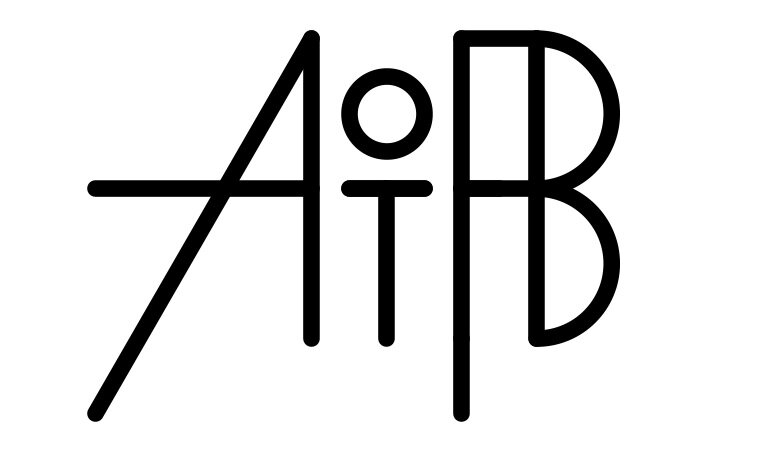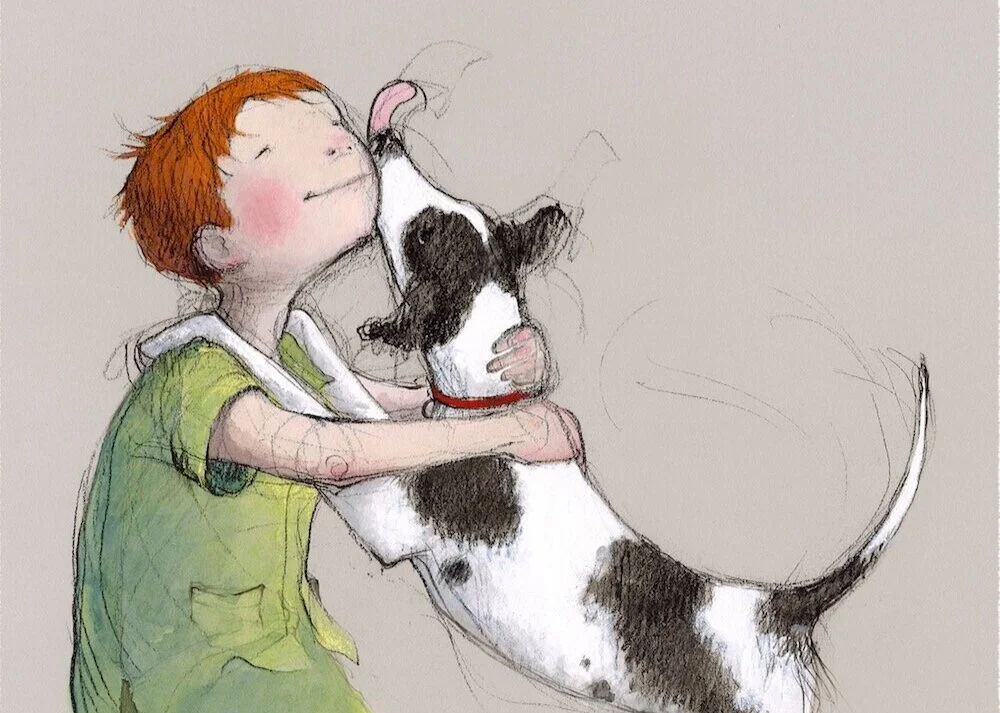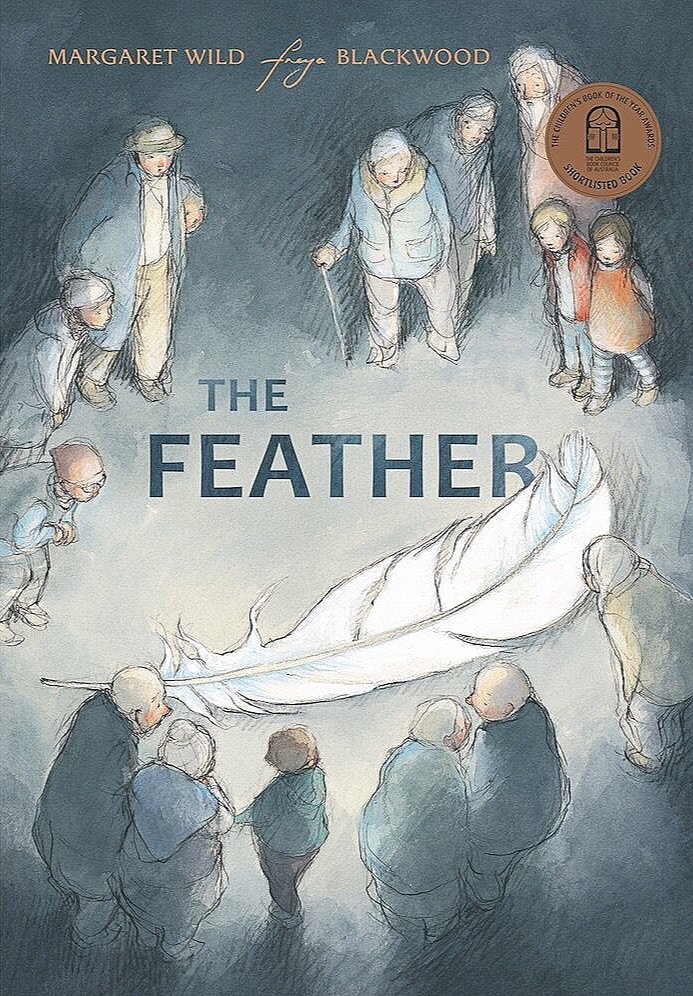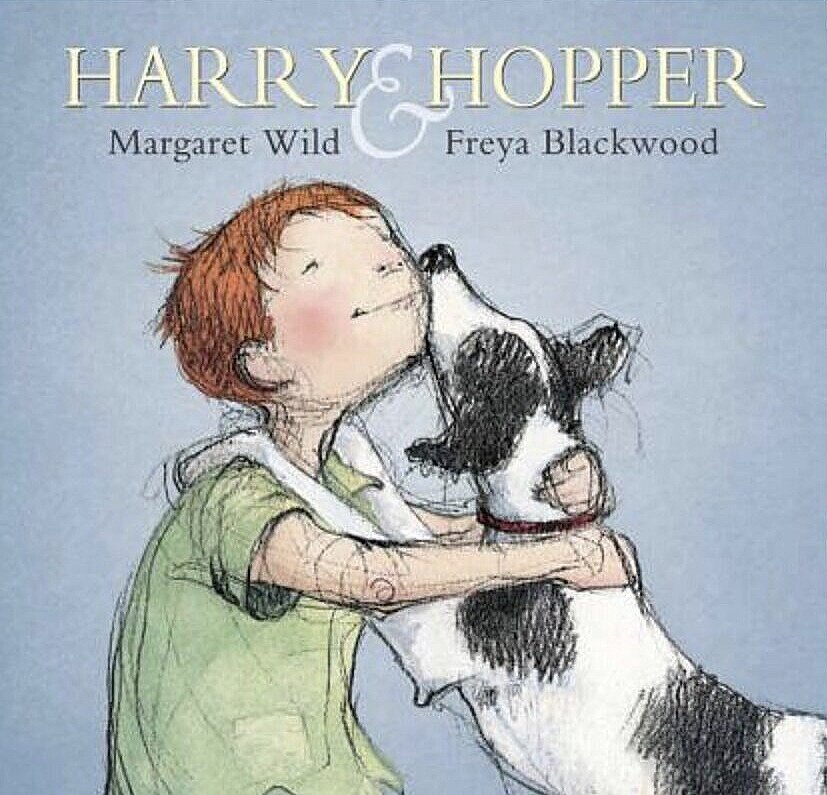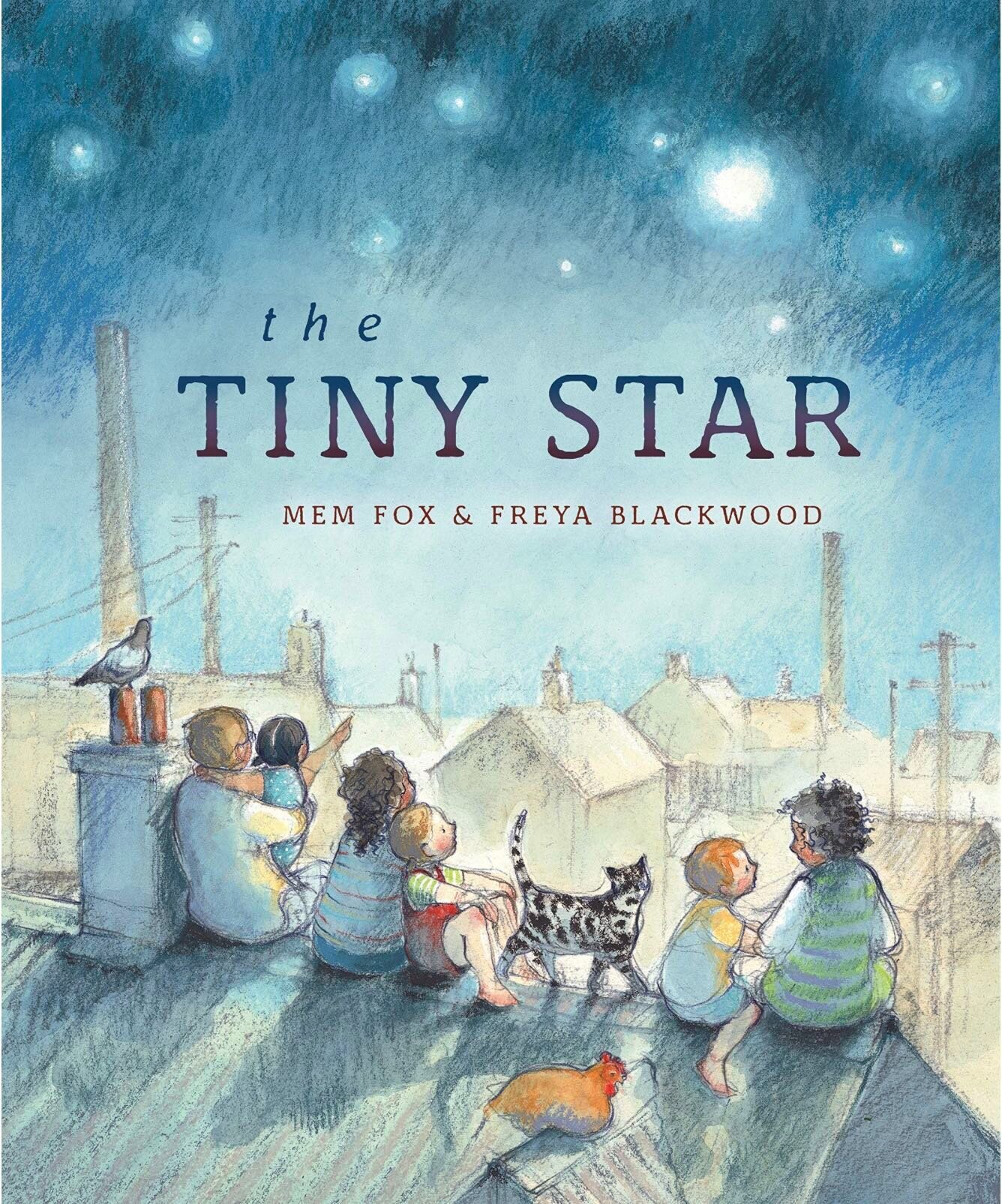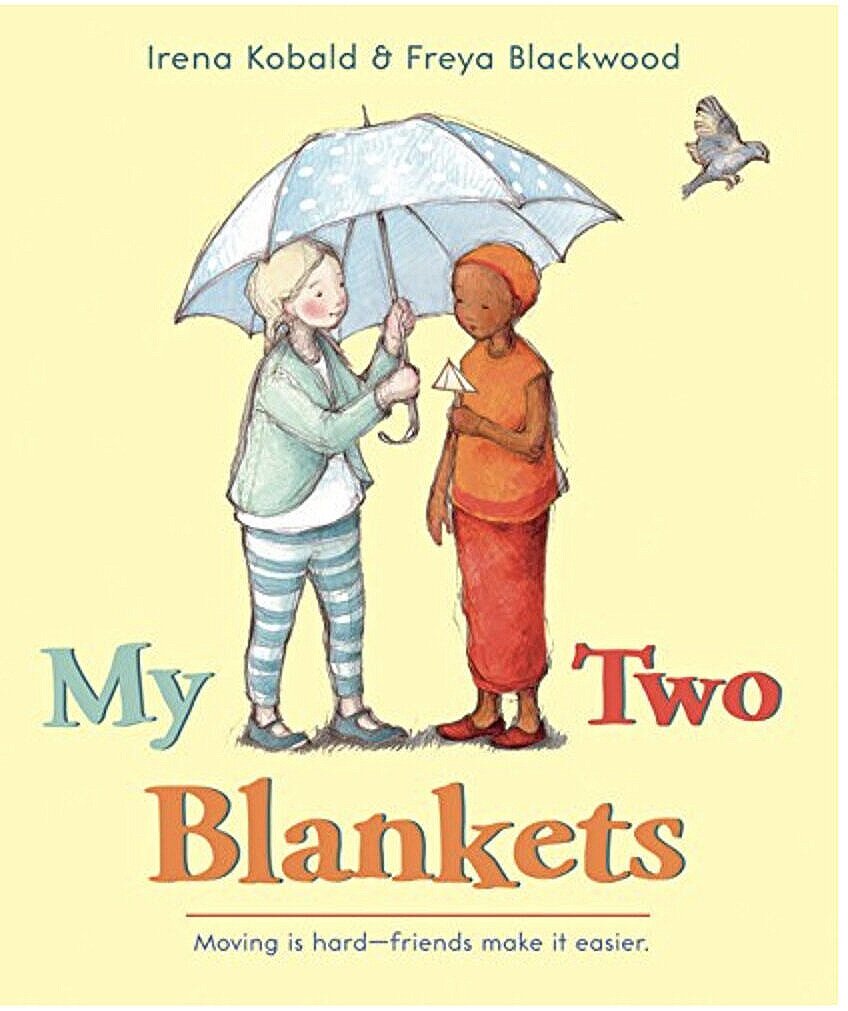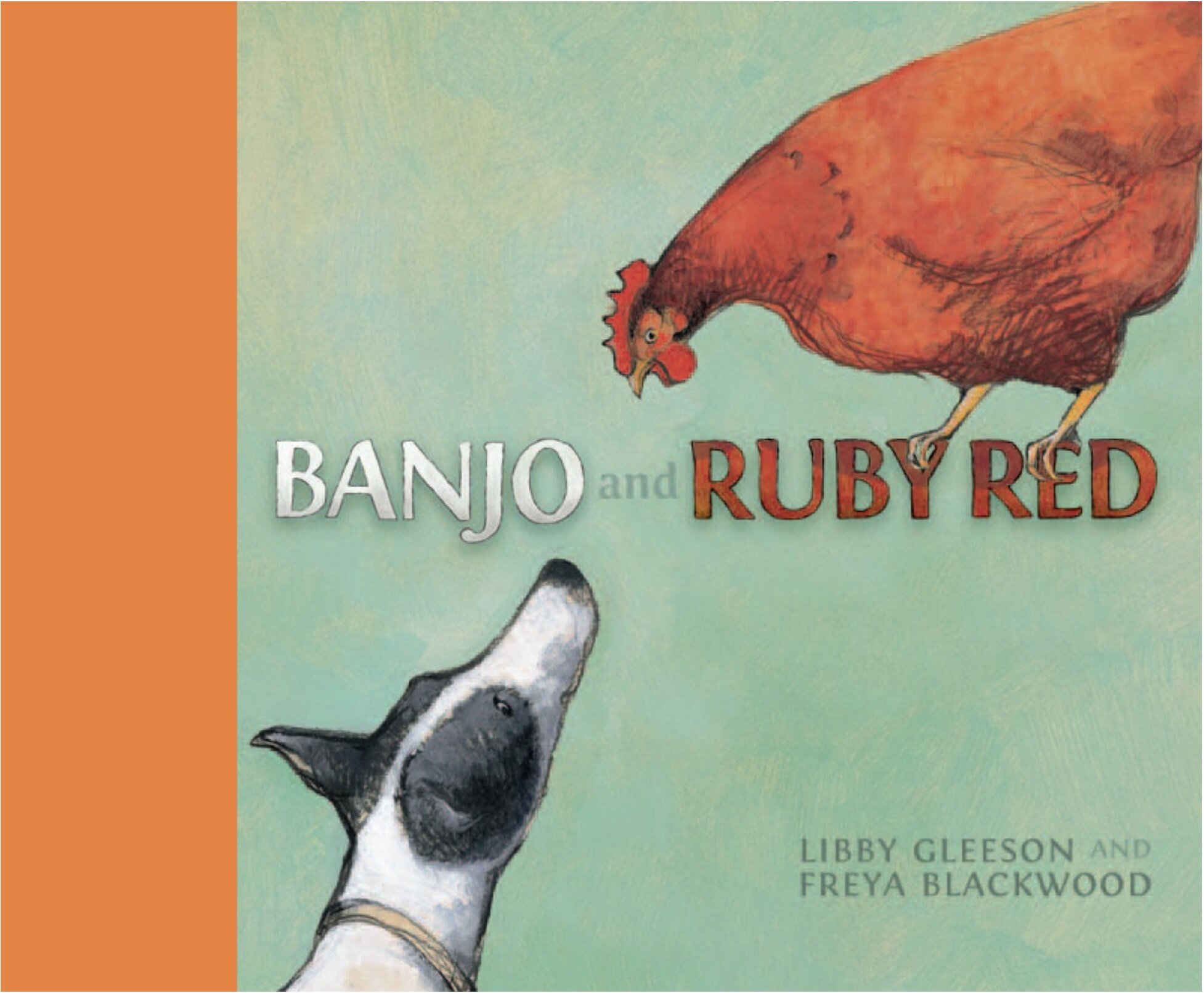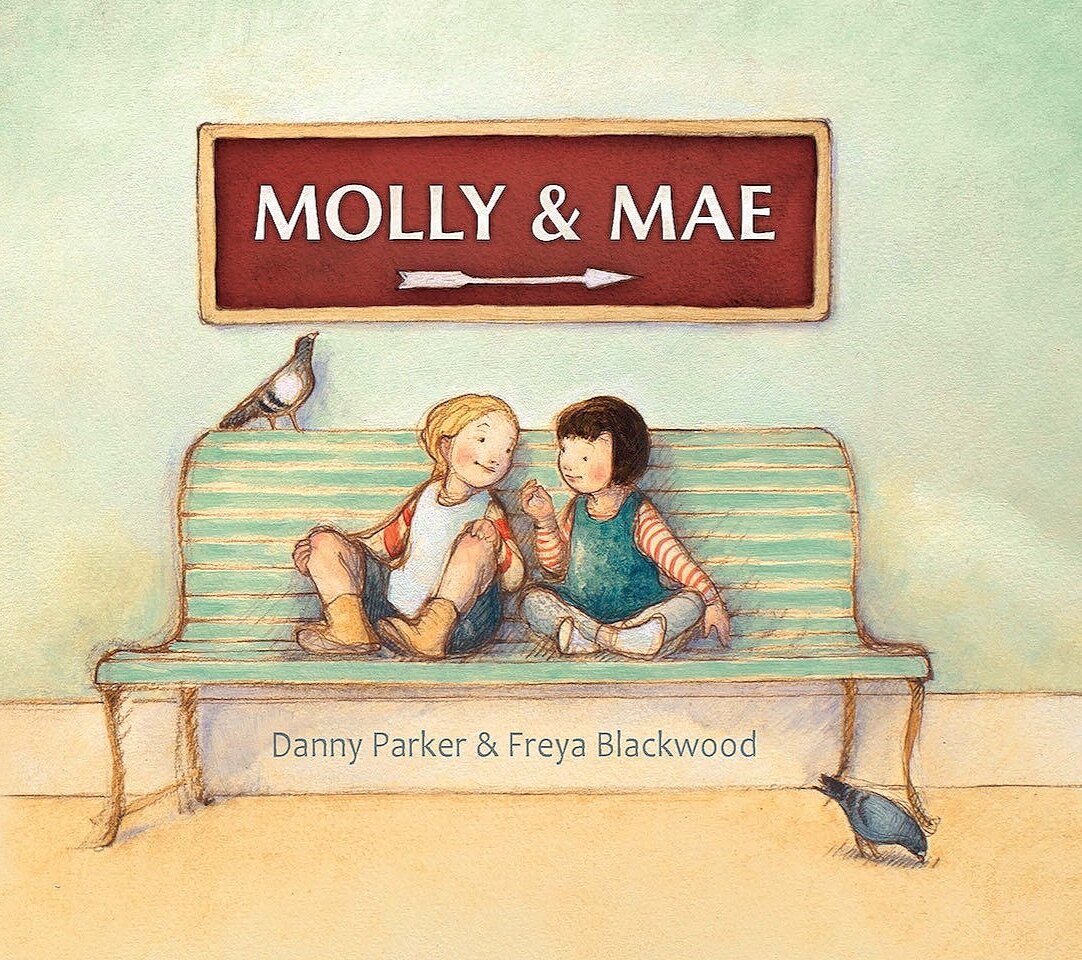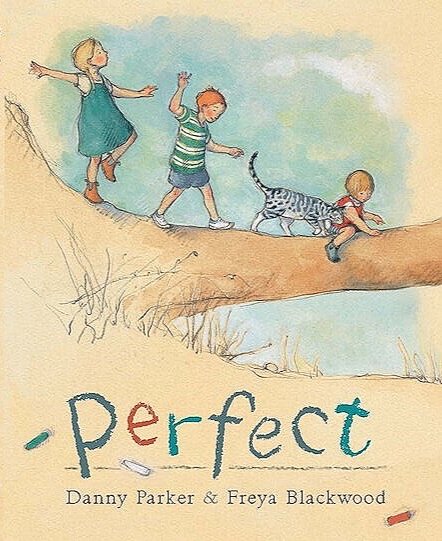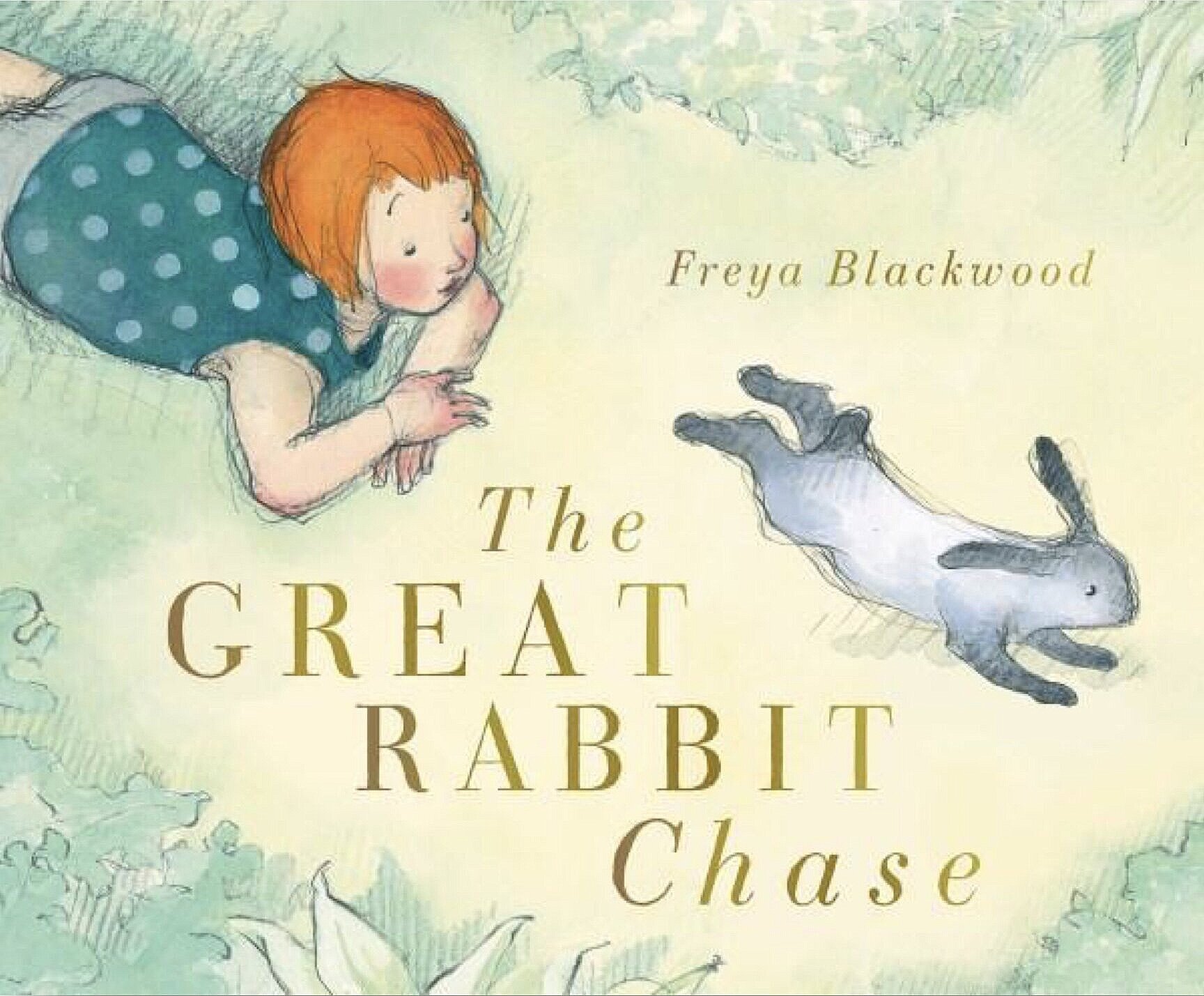An Interview with Freya Blackwood
Freya Blackwood
December 10, 2020
We interviewed Freya Blackwood, award-winning illustrator and author of children’s picture books. Her books have received numerous honors from the Children’s Book Council of Australia and in 2010, she received the Kate Greenaway Medal for Harry & Hopper. Blackwood lives and works in New South Wales, Australia.
A Selection of Work
The Feather, by Margaret Wild, illustration by Freya Blackwood
In The Feather, you illustrate a somber subject that ends with a sense of hope. Are there any challenges you face when illustrating such a serious theme for your primary audience of children?
I create work as I feel it should be for a particular story, without really making alterations for the young age of the reader. However, having said this, I think my work has a softness that seems to balance any darkness.
Interior illustration, by Freya Blackwood, from The Feather
I find great satisfaction in trying to depict the difficult emotions of a character. I work very carefully to capture facial expressions in minimal linework and enjoy finding the best colours, composition and viewpoint to subtly intensifying those emotions. I hope that a gentle portrayal of serious themes can be experienced without overwhelming the reader.
Interior spread from The Feather, by Margaret Wild, illustration by Freya Blackwood
For the artwork in The Feather, I felt the colour scheme needed to be sombre for such a serious theme, but not drab. So I created a range of greys from magenta, yellow and pthalo blue to subtly enrich the colour scheme. I generally try to add details that extend the narrative and provide interest. And of course the feather I have depicted in this story seems to glow which instantly provides hope and balances the darkness.
Interior spread from The Feather, by Margaret Wild, illustration by Freya Blackwood
Your illustrations have a pencil/charcoal sketchiness that gives them a distinct style. Did you set out to make this technique a style or did it grow from finding the final position of a character or scenery detail?
The style of my work has definitely evolved since I began illustrating picture books in 2002. Originally the drawings were stiffer and the colouring much neater. I often loved the feeling of the original rough drawings but felt disappointed at the change the work went through when drawing up the illustrations for the final time. I was conscious that the final illustration had lost the life of that original pencil sketch.
Cover of Banjo and Ruby Red, by Libby Gleeson, illustration by Freya Blackwood
Interior spread from Banjo and Ruby Red, by Libby Gleeson, illustration by Freya Blackwood
Although I never trace over drawings, but redraw them by eye so the working lines are present, I found the pencil linework which had so much life, got lost and washed away by the paint. So I set out to find a way to keep this rougher pencil drawing in the final works, and discovered I could scan the pencil drawings into the computer, darken the linework in Photoshop, or even change the colour of the linework, and print it out on the final watercolour paper. This meant I painted with greater freedom, knowing I could always just print the drawing out again. The linework stayed strong and in place and I could strengthen it after painting with charcoal, pastel or a coloured pencil pencil. Many of my books have been created like this.
Cover of My Two Blankets, by Irena Kolbald, illustration by Freya Blackwood
Sketch by Freya Blackwood from My Two Blankets
Interior spread from My Two Blankets, by Irena Kobald, illustration by Freya Blackwood
What do you find most challenging in developing your illustration: perspective, facial expressions, scenery, animals?
I often struggle when it comes to putting colour on a drawing. I love the black and white pencil sketch, but sometimes don’t know what to do with it after that! I’ve had no formal training in illustration or art and therefore everything I do is just self taught and I often feel I could learn more about colour.
Endpapers by Freya Blackwood from Banjo and Ruby Red
Endpapers by Freya Blackwood from Banjo and Ruby Red
Do you keep a sketchbook?
At times I’ve used a sketchbook to keep ideas together, but I don’t keep a regular sketchbook. Although I draw all the time, it’s only for picture book projects, and then I draw on loose paper so I can pin it up on pinboards around my drawing board. Though I never draw in my spare time, I’ve recently discovered that I like painting from life— landscapes, still lifes or portraits—but it’s quite different work and more of a meditative thing for me.
Blackwood’s studio
Although you’ve illustrated books by other authors, are you also interested in continuing to develop your own stories?
I have always wanted to write and illustrate my own stories, but it’s only recently that I’ve put time aside to give this a try. Having illustrated stories by others for so long, it’s been difficult to ascertain what exactly it is that I have to say on my own. But this is developing with time.
Cover of The Great Rabbit Chase, Freya Blackwood
Can you elaborate on how you use photos as source work for your drawings of children?
I use reference material to get ideas, but then generally create my own version, not copy the material. When faced with a particularly difficult position or angle for a character I’m drawing I’ll get my daughter to pose for me, or someone else of the right age. My mother is a brilliant and prolific photographer so at times I have been inspired by images from my family’s album. For example, photos of my brother and I as children, camping and picnicking, became the inspiration for Perfect.
Cover of Perfect, by Danny Parker, illustration by Freya Blackwood
Sketch by Freya Blackwood for Perfect
Interior spread from Perfect by Danny Parker, illustration by Freya Blackwood
Your illustrations are often narrative-driven. Have you ever considered creating a wordless picture book?
Funnily enough, I am currently working on a wordless picture book! It’s called The Boy and The Elephant. The idea for the book came about from preliminary work I was doing for a series of murals. I began working a story up in images only and eventually had a beginning, middle and end in storyboard form. I submitted it with minimal words and my publisher thought it would work as a wordless picture book. It’s been a very different process, trying to find the right way to tell the entire story without words, but I’m loving the process and problem solving aspect.
Cover of Baby Day, by Jane Godwin and Davins Bell, illustration by Freya Blackwood
Interior spread from Baby Day, by Jane Godwin and Davina Bell, illustration by Freya Blackwood
Do you notice any differences in picture books produced in Europe or the United States as they compare to ones produced in Australia?
I’ve always found the picture books that come from Europe very inspiring, with their culturally diverse, bold and sophisticated illustration styles. Until recently I think our illustration styles were more traditional than those coming out of Europe, just as our art movements lagged behind because of our geographical distance. Australia doesn’t have a dedicated picture book illustration course, and publishing tends to be more conservative because of the smaller market. But with social media and Instagram particularly, there seems to be more sharing of styles and materials and more experimentation in Australian illustration. Even though many publishers rely on publishing commercial picture books, there is a part of the market that represents our unique country, particular way of life and people. It is particularly exciting to see a growing body of Indigenous picture books which have a very beautiful and distinct style drawn from Australian Indigenous art. It’s a great thrill to see our industry develop and strengthen and find representation worldwide.
Cover of Harry & Hopper, by Margaret Wild, illustration by Freya Blackwood
Interior spread from Harry & Hopper, by Margaret Wild, illustration by Freya Blackwood
What other pursuit do you think you might have embraced if you had not followed this career path?
It feels like quite a stroke of luck that I ended up illustrating picture books, as I floundered and flitted about in my early 20s, uncertain of the type of work I was suited to. Even though I created illustrated books as a child, I didn’t seriously consider illustration until I was working in the film industry and was inspired by the designers working on The Lord of the Rings. I’ve always loved the colours and feel of places and spaces, and studied production design for film and television, so if I hadn’t fallen upon illustration I may have made my way to production design.
Cover of Molly & Mae, by Danny Parker, illustration by Freya Blackwood
Interior spread from Molly & Mae, by Danny Parker, illustration by Freya Blackwood
Do you get much art direction at this point in your career or are you able to be fairly free-wheeling with your illustrations?
After initial consultation, I’m generally left to come with my own ideas and concepts. There are advantages to being free-wheeling—a chance to develop a concept, evolve a character, drift into areas unchallenged, however I do appreciate and need collaboration. I find working alone in my studio in the backyard rather lonely. Some of my favourite books have been the result of really strong collaborations.
Cover of The Tiny Star, by Mem Fox, illustration by Freya Blackwood
Do you know of any plans to make The Tiny Star, your recent collaboration with Mem Fox, available by publishers in the U.S.?
There was talk of The Tiny Star being published in the U.S. but I haven’t heard anything since Covid came around.
Interior spread from The Tiny Star, by Mem Fox, illustration by Freya Blackwood
Interior spread from The Tiny Star, by Mem Fox, illustration by Freya Blackwood
Thank you, Freya, for sharing your work and giving us a look behind the scenes of your creative process.
A selection of Blackwood’s work
For more info on Freya Blackwood:
All images are used with permission from Freya Blackwood, Penguin Random House Australia, Hardie Grant Books, Allen & Unwin, Scholastic Press and HMH Books for Young Readers.

